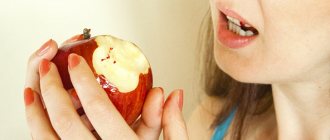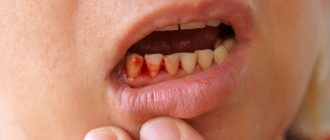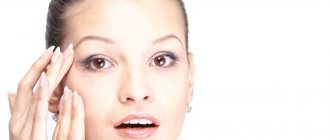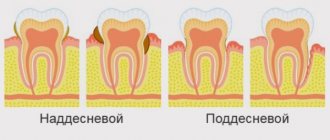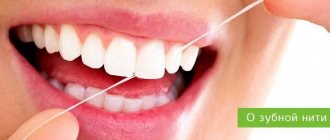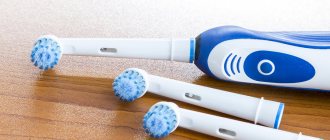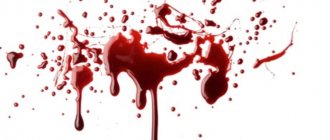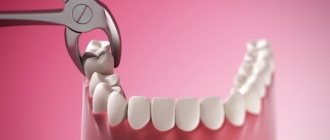A problem in which the blood does not clot well is called a bleeding disorder. It is caused by the fact that blood vessels do not normally become blocked when they are damaged.
When everything is fine, when there is bleeding at the wound site, the blood begins to thicken, which prevents large losses. But sometimes this complex mechanism fails, resulting in severe or prolonged bleeding.
When blood does not clot well, this does not always lead to external loss. It can also appear as bleeding under the skin or in the brain.
Causes
Bleeding disorders are divided depending on the etiology - acquired, genetically determined and congenital, as well as autoimmune.
Blood clotting disorders can be caused by hereditary pathologies, but not only. Genetic diseases can also influence the development of the disease. For example, a newborn baby may be diagnosed with hemophilia or von Willebrand disease.
Also, the disorder can be caused by a lack of vitamin K. In addition, such problems can be a consequence of cancer of the liver and other organs.
Most often, bleeding disorders occur due to infectious hepatitis or scarring, which usually occurs with cirrhosis.
Long-term use of strong antibiotics or drugs to treat blood clots can also cause bleeding problems.
When bleeding from the lip
A split lip is a common injury in children. In this case, there is often heavy bleeding and rapid swelling, but there is no need to panic.
Before stopping the bleeding, you need to persuade the child to open his mouth, and then assess the nature and severity of the damage. Then wash the wound with a weak solution of potassium permanganate or hydrogen peroxide, since there is dirt in the wound if the child falls on the street. To stop bleeding from the lip and prevent or relieve swelling, you need to apply cold to constrict the blood vessels. To do this, you can use frozen foods placed in a clean plastic bag or snow in winter. It is important to assess the size of the damage; stitches may be required.
Iodine and brilliant green should not be used on the lip; emollients, anti-inflammatory and wound-healing agents will be required here. This could be a little sea buckthorn, ointment with propolis, honey. To quickly relieve swelling and speed up wound healing, you can use special gels that are sold in pharmacies, such as Metrogyl Denta.
As a rule, with normal clotting, if the wound is small, the blood from the lip stops quickly. It is enough to press the wound with a sterile swab and wait about ten minutes.
Symptoms
Main symptoms of the disease:
- Skin rashes. Depending on the cause of poor coagulation, both small pinpoint hemorrhages (petechiae) and extensive hematomas may appear on the skin.
- Nosebleeds.
- Hemorrhages in the mucous membranes of the mouth, nose, and intestines. The latter option can lead to the appearance of blood in the stool.
- Hemorrhages in the brain. Occurs with fragility of blood vessels and low blood clotting.
- In the event of an injury, cut, or bruise, the bleeding does not stop for a long time.
- Hemorrhages in joints, muscles and internal organs can be observed with the hereditary disease hemophilia. Bruises (hematomas) can form even with minor mechanical damage.
If you get a cut while shaving
If cuts occur while shaving, it is recommended to compress the wound by applying a piece of clean gauze or cloth to it and hold it for about ten minutes, without tearing off the bandage. Check after 10 minutes. The bleeding does not always stop immediately and may continue to ooze after the tampon is removed. Then you need to take a piece of paper napkin, stick it to the wound (it will hold on due to the blood) and walk like this for a while until the blood clots. After shaving, cuts should be treated with hydrogen peroxide, and in some cases antibiotic ointment may be required.
Cuts when shaving are a common occurrence, so it is important to know how to quickly stop bleeding
Treatment
For treatment of this condition to be effective, the causes of the disease must be determined. It is very important to promptly identify and treat the main disorders - liver pathologies or oncological lesions.
Additional therapy methods include:
- injection of vitamin K;
- drugs to improve clotting;
- transfusion of frozen blood plasma;
- Other medications include hydroxyurea and oprelvekin, which help eliminate platelet problems.
The patient's diet should include foods high in calcium, folic acid, vikasol, and amino acids.
These include dairy products: cheese, cottage cheese, kefir. Fish and meat will also help eliminate the symptoms of pathology. It is equally important to eat leafy vegetables - green onions, spinach, cabbage.
On the operating table
— How can a person suspect he has thrombosis?
— Clinical manifestations of thrombosis occur not only against the background of Covid. It can develop after surgery, serious trauma, when taking oral contraceptives, chemotherapy, etc. Acute venous thrombosis is characterized by sudden swelling, constant bursting pain in the limb, cyanosis or redness of the skin of the legs.
It should be noted that quite often clinical manifestations due to thrombosis may be absent or of a low-symptomatic nature. On the other hand, with chronic diseases of the veins of the legs, heaviness in the lower extremities, swelling and pain, cramps, parasthesia (burning sensation, tingling, “pins and needles”) are often observed, and in more severe situations – trophic disorders and pigmentation.
The extreme degree is a venous trophic ulcer. More often it occurs on the inner surface of the lower leg. However, modern medical capabilities make it possible to successfully treat this condition.
Legs.
news.rambler.ru
As for pulmonary embolism, it may be symptomatic or not manifest itself at all. With massive damage and blockage of the blood vessels of the lungs, a person’s blood pressure seriously decreases, severe shortness of breath and palpitations appear, and loss of consciousness may occur.
This is a life-threatening condition that requires emergency hospitalization and inpatient treatment in a specialized vascular center. It is very dangerous.
It must be said that thromboembolism also occurs in inpatients after surgical interventions - in urology, gynecology, oncology. In approximately 10% of cases, this is, so to speak, “pure” thromboembolism, which is associated with the development of thrombosis directly in the vessels of the lungs, and in the rest it is a consequence of existing thrombosis of the deep veins and inferior vena cava.
Operation.
Oncology Center.
- Why is this happening?
— There are many risks of getting thrombosis in the early postoperative period and even right on the operating table. This is facilitated by the operation itself, bed rest, dehydration, excess body weight, etc. The older the patient, the higher the possibility of thrombosis. This is influenced by the duration and nature of the operation itself: if it is performed openly and not using minimally invasive technologies, then the risks are higher.
There are global and Russian recommendations for assessing these risks. For example, the Caprini scale. It takes into account everything from heart disease, previous surgeries to age, pregnancy and injuries that the patient has ever had - more than two dozen parameters, for each of which points are awarded. New important risk factors are now being added to this scale.
The higher the risk of developing venous thrombosis, the more attention is paid to prevention. It is simple - a normal drinking regime for the patient, activation and getting to the feet as early as possible after surgery, administration of anticoagulants (to “thin” the blood) and mandatory wearing of compression stockings (stockings, elastic bandages). All this accelerates blood flow in the deep veins so that there is no stagnation of blood in the lower extremities and pelvis.
Doctors. Operation.
CCO.
General recommendations
To avoid such problems, we strongly recommend that you follow the simplest rules of the rehabilitation period:
- Eating can be done no earlier than 3 hours after tooth extraction.
- Don't eat hot or cold foods.
- Give preference to liquid porridges and broths. Supam. Solid foods should be avoided until the hole is completely healed.
- Avoid taking hot baths and saunas.
- Avoid heavy lifting and exercise for a week.
- After tooth extraction, you should not rinse your mouth; this will significantly increase the healing time of damaged tissue.
- Limit brushing your teeth for the first 24 hours.
- You should not drink alcohol for a week after the operation.
- Never apply warm or hot compresses to your cheek.
Walk, lie down and wet yourself
— What should be done to maintain the health of the veins and not lead to thrombosis?
— Thrombosis of the lower extremities has a huge number of causes and triggers, starting from cancer and cardiovascular diseases, ending with smoking, high cholesterol, obesity and even hypothermia.
There are factors that we cannot change. For example, gender: men are approximately twice as likely to suffer from deep vein thrombosis. On the other hand, women are three to four times more likely to have chronic venous diseases (varicose veins, post-thrombotic disease, phlebopathy). This is primarily due to hormonal levels and reproductive function - the hormone estrogen can reduce the tone of the venous wall.
In addition, women have periods in life when intra-abdominal pressure is elevated for nine months. The more pregnancies and births, the higher the risk of chronic diseases and venous thrombosis.
Phlebologist Alexey Petrikov.
Altapress.ru.
There is also a hereditary factor, which is perhaps one of the main ones. A feature of connective tissue, mutations, unfortunately, are passed on from parents to children. If blood relatives experienced episodes of thrombosis at a young age, then the likelihood of development in their descendants is high. In this case, it is necessary to engage in prevention as early as possible.
However, many risk factors are modifiable. Firstly, an active lifestyle is necessary. Any movement prevents blood stagnation and forces the venous system to be in good shape. 70-80% of the blood from the lower extremities is “pumped” by the calf muscles - this is the so-called “muscular-venous pump”.
A contrast shower is useful. Yes, the same one that was practiced in Soviet kindergartens. You just need to do it correctly: in a circular motion from bottom to top, alternating cool and warm water as tolerated.
It is quite possible to combat physical inactivity and excess body weight to reduce the risks of thrombosis. And also monitor intra-abdominal pressure: constipation and irritable bowel syndrome often lead to vein pathology.
Diet. Losing weight.
CC0
Of course, it’s worth mentioning high heels. A heel height of five to seven centimeters is considered physiological. You cannot constantly walk at a “height” of 10–15 cm. The ankle joint is also an additional blood pump; in a deformed, unnatural state it does not work.
Next, inflammation occurs, the venous valve is damaged, the pressure in the veins increases, and there is practically no muscular frame to restrain it, so the veins expand and unsightly varicose nodes appear, which are visible to the naked eye.
By the way, only humans suffer from varicose veins and no one else in nature. If you feel heaviness and swelling after a working day, you can throw your legs on the back of the sofa and lie there for 30-40 minutes: the blood will flow towards the heart by gravity. If a person is lying down, then in this position the pressure in the venous bed tends to zero. For comparison, in a standing position it is 90-100 mm of water column.
Women's legs.
fishki.net.
— That is, by running, we increase the risk of varicose veins, and while lying down, we increase the risk of thrombosis.
- That's not entirely true. Brief and short-term body positioning does not particularly affect these situations. The development of both chronic venous diseases and acute conditions is influenced by a complex of risk factors that act continuously or for a long time. An additional provoking factor can often be significant in terms of the development of thrombosis or thromboembolism. Of course, we need a golden mean.
At the same time, you need to understand that if you detect any of the symptoms that we talked about at the beginning, you need to contact a specialist. Often patients come to us with trophic ulcers who require surgery. Many are afraid of it and are treated with folk remedies, aggravating the situation.
Who is Alexey Petrikov
Doctor of Medical Sciences in the following specialties: surgery, hematology and blood transfusion.
Doctor of the highest qualification category in the following specialties: surgery and cardiovascular surgery. Professor of the Department of Faculty Surgery with a course of additional professional education at Altai State Medical University, Associate Professor of the Higher Attestation Commission. Author of more than 200 published scientific works, three monographs, seven teaching aids, one patent for an invention.
Member of the Executive Council of the Association of Phlebologists of Russia, member of the Russian Society of Surgeons, member of the Association of Cardiovascular Surgeons of Russia. Russian expert in the field of vascular pathology of various locations. Co-author of national clinical guidelines on acute and chronic venous diseases.
